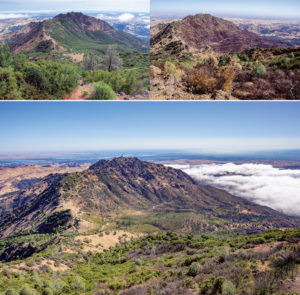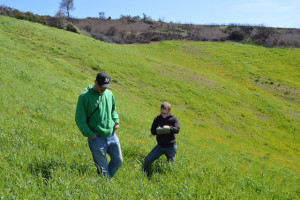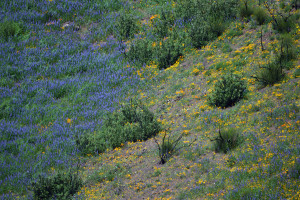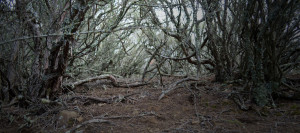This article is part of a monthly series of photos and articles on the transformation of Mount Diablo following the 2013 Morgan Fire, funded by special donations from Bay Nature readers. You can find our stories, as well as event listings, iNaturalist sightings, and magazine features, at baynature.org/diablo.
hen the flames died down on Mount Diablo last September Lindsey Hendricks wasted no time.
She got out on the mountain and started digging.
A Ph.D. student in the department of integrative biology at the University of California at Berkeley, Hendricks is studying the ecological effects of wildfires. She wanted to see how the 2013 Morgan Fire, which seared 3,100 acres, had affected the dominant shrub of the mountain’s chaparral habitats, Adenostoma fasciculatum, or chamise.

So Hendricks and two undergraduates, Christie Ziegler and Megan Gillian Seymour, devised an experiment. After securing a permit from the State Parks department, they chiseled out hard-packed chaparral soil in three places: one severely burned, one moderately burned, and one that hadn’t burned at all. In each case, they took a heaping handful (300 ml) of soil at two depths: one from the top two inches of soil, and another two inches below.
Then they counted the number of chamise seeds in the samples. They’re tiny—about the size of a grape seeds—and numerous. In fact, she found that a single handful of soil could contain up to 1,500 seeds. When it comes to reproduction, chamise doesn’t mess around.
Next Hendricks and her collaborators put their soil samples in pots in a greenhouse—and proceeded to pamper them. At a time when the mountain got almost no rain, these pots got water three times a week, lots of sunshine, and were spared the depredations of hungry birds and mammals. “It was nothing like natural conditions,” Hendricks says. “We almost forced the seeds to germinate.”
Three weeks later, the most severely burned soils in the greenhouse were prospering. They produced an average of 14 chamise sprouts per pot in the top layer of soil and 2.5 in the lower layer. Moderately burned soils were not quite as productive, but they had sprouts, too: an average of 3.6 up top and 0.6 down below.
The unburned soils told the most interesting story, at least for the layperson. On average the top layer of a heaping handful of these soils contained 280 seeds and the lower layer 73 seeds. But they didn’t sprout. Not at all. The result was exactly what Hendricks expected from reading other scientists’ work on chaparral ecology.
“Chamise requires cues from fire to repopulate,” she says. “It makes sense from an evolutionary perspective.” A slide from her presentation about this work states the principle more simply. Beside a picture of a winking Marilyn Monroe, a caption reads, “Some like it hot.”






